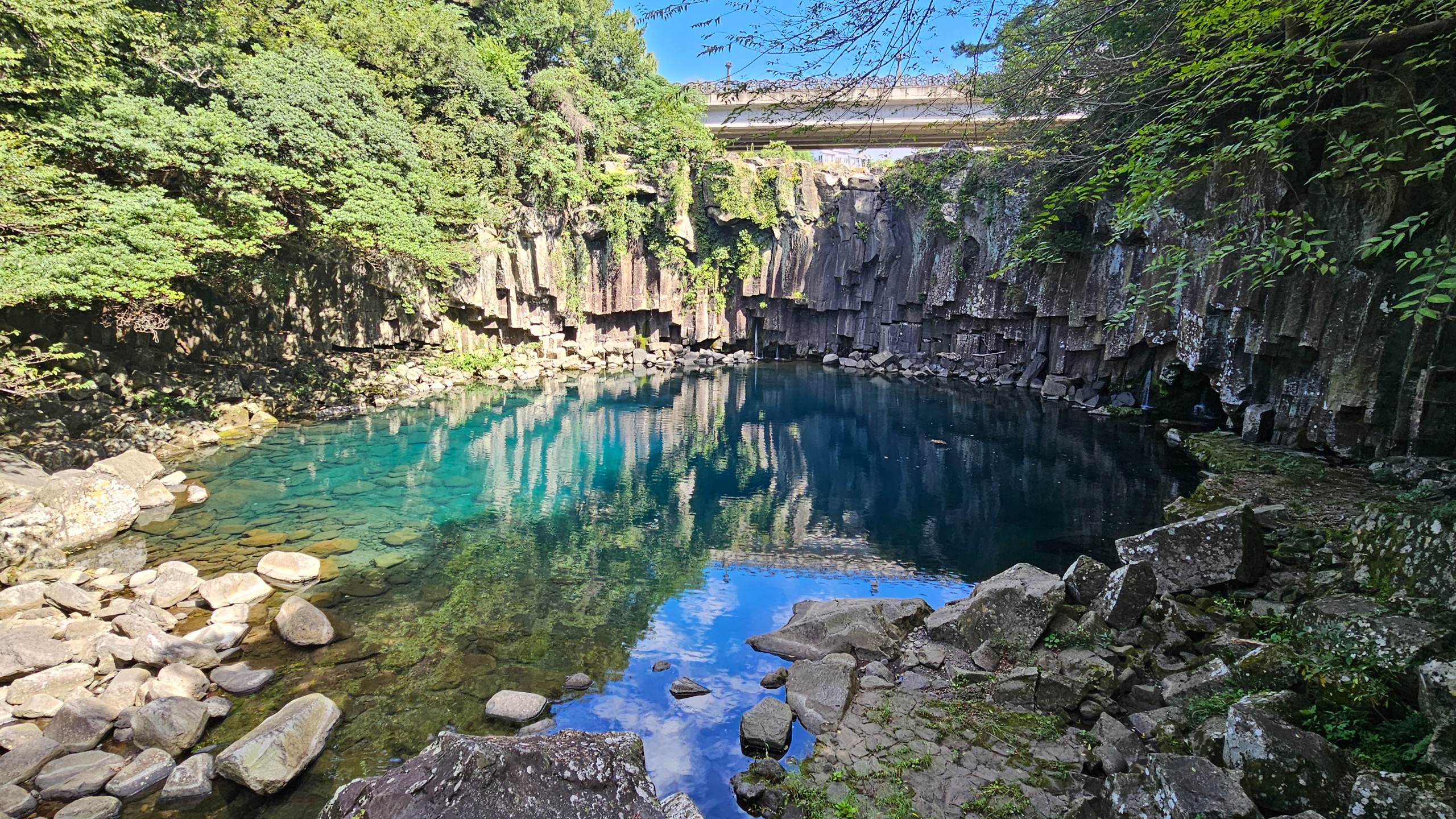
DAY 8
(Reading time: 5 minutes)
Are you familiar with Murphy? That guy who actually runs our lives, no matter how much we want to believe we’re the masters of our fate? Murphy ensures we pick the slowest checkout line, miss a connecting train by one minute, or have rain pour down in direct proportion to how much effort went into cleaning our windows the day before.
Murphy is everywhere, and he followed us to Jeju to orchestrate the worst bout of vomitus I’ve ever experienced – on the very day we planned a trip to see the stunning temples, waterfalls, and cliffs on the island’s southern side.
How Bad Was It?
It was exactly five times worse than anything I’d endured before. Numbers don’t lie, and I have vivid memories of those five incidents:
– in the bus
– beside a waterfall
– in a parking lot near the same waterfall
– at a public transport stop
– in the city center next to a main road
Murphy at his best. 😅
We had put together a beautiful itinerary near Seogwipo, Jeju’s second largest city, located in the southern part of the island. I already felt unwell for reasons unknown in the morning, but we dressed and headed out—plans are plans, and quotas must be met!
The hour-long bus ride across the island was reasonably fast, with minimal stops. However, my stomach didn’t agree with the bumpy ride and made its displeasure known. After some short-lived relief, we managed to visit the area of Jeju’s three famous waterfalls: Cheonjeyeon, Cheonjiyeon, and Jeongbang, and even saw two of them.
Well, sort of two. The first, Cheonjeyeon, only flows after heavy rain, and as the skies were perfectly clear, not a single fish so much as stirred in the stagnant water (see the opening photo). The second, Cheonjiyeon, falls from a height of about 20 meters and flows year-round, regardless of the weather.

The most impressive and tallest is the third waterfall, Jeongbang, which is the only one in South Korea to cascade directly into the sea. Unfortunately, we didn’t make it there. Not a chance. My stomach declared a one-day blitzkrieg, and my body surrendered.
We also skipped Jusangjeolli Cliffs and Jeju’s largest temple, Yakcheonsa. I barely managed to fight my way back to the hotel, and even the return trip involved some humiliating public scenes.
The Remedy? Tangerines and Sleep!
What finally helped me? Sleep and local fruit! 😊 Mark bought two kilograms of tangerines, and I ate half of them the same day. With every bite, I felt better and better—a little Jeju miracle!

The people of Jeju are justifiably proud of their island treasure. They sell not only tangerines of various varieties, colors, sizes, and ages but also themed souvenirs—from keychains and plush toys to unexpectedly popular goofy-looking orange caps with a green tuft on top. If you step into one of the specialized stores, you’ll find yourself in a kitschy paradise of tangerines and little lava stones.
Chances are you won’t leave empty-handed, as Koreans are masters of souvenirs. 😊 We bought a treat called chaltteok, a chocolate variation of traditional Korean chapsaltteok, which tastes and looks like a blend of Snickers and mochi.

The Evening View
Given my condition, we couldn’t end the evening with a traditional feast at our favorite Japanese bistro (pictured below to the left of “TheFaceShop”). Still, we didn’t go unrewarded for surviving the day.

See that hill on the horizon in the distance? That’s Hallasan. After several days hidden behind a wall of rain clouds, it finally revealed itself in all its grumpy glory. Maybe we’ll conquer it someday.
-endy-
DONKEY’S SPECIAL:

According to a historical painting, soldiers shot from right to left, arrows were retrieved at the target, and sent back via rope for reuse. Probably none of them imagined that more than 300 years later, their training would still interest anyone…
It was quite the adventure finding tangerines for Andy in Jeju. Wandering into the city, I stumbled upon a dedicated tangerine shop within minutes. Not a small stall, but a large brick-and-mortar store. Crates and baskets of tangerines of all types filled the space.
I’m no expert, so I could only distinguish which ones “looked like the ones back home” and which didn’t. Randomly, I picked a basket of familiar-looking tangerines and was soon surrounded by three shopkeepers. As the only customer, I received their full attention.
They spoke Korean; I didn’t. I spoke English; they didn’t. Based on one of the few non-Korean signs, I guessed the basket weighed around 2 kg—too much. I gestured for half the amount, and they immediately understood… or so I thought. Instead of halving the basket, they pointed me to another one with tangerines of the same size but half the price.
I still don’t know how that worked. If you placed the two baskets in front of me without price tags, I couldn’t tell the difference. But with one gesture, I managed to cut the price by 50%.
As a bonus, they let me taste one of their premium tangerines. Though it looked green—immature to the untrained eye—it tasted wonderfully tart.
-mj-